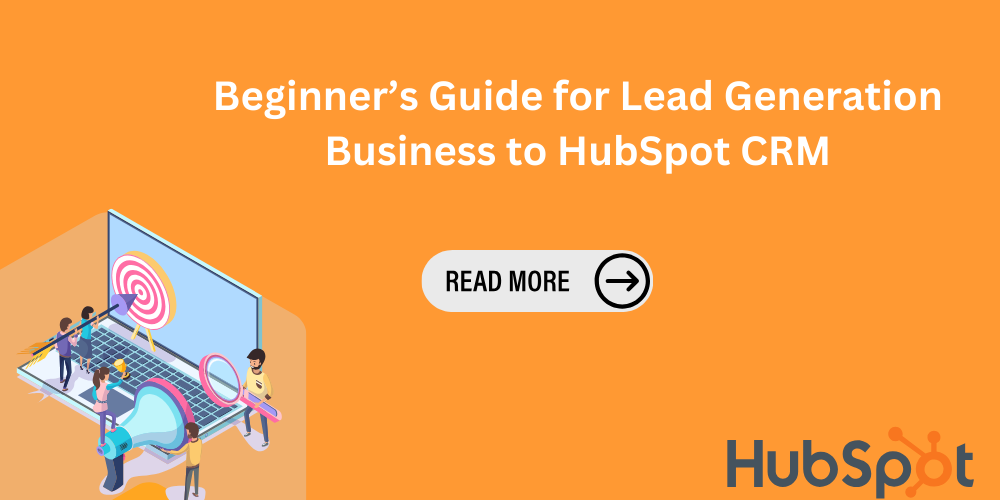HubSpot is one of the mainstream CRM platforms for marketing, sales, and customer services. When a contact is generated in HubSpot, they can be nurtured via automation, reached via the sales team through integrations (call, email, what’s app), and eventually converted into a customer. For a business getting started with HubSpot, we share a few tricks to correctly leverage the platform.
HubSpot Tracking Code
For a business, multiple channels contribute to generating leads. HubSpot can track the source of lead generation. If the HubSpot tracking code is not implemented, lead attribution can go to the wrong channel e.g. Direct Traffic. So, the first step after opting for HubSpot is to implement the code across all relevant pages. Here’s an official guide by HubSpot to implement the tracking code: https://knowledge.hubspot.com/reports/install-the-hubspot-tracking-code
Contact Properties
Potential customer details are important to move them from the upper funnel to the bottom of the funnel. There are default contact properties like name, email, and address which can help you manage contacts. However, based on your business needs, you can also create new properties to get the right details which can help in providing the right information and personalize marketing. For instance, for a real estate brand, having a property around an “interested location” can help a business market its contacts with real estate projects in a particular location. To create contact properties, do the following: Go to data management under settings, and create property based on business need.

Forms
HubSpot allows you to both create its own forms and also integrate forms from the website (say WordPress contact form 7). However, it is recommended to use HubSpot forms as you can easily manage multiple properties instead of mapping fields from the native form to HubSpot. Also, HubSpot can help you track the channel from where leads are coming from (paid search, organic, etc), send automated emails on form submission, send email notifications to salespersons, and much more.
One of the critical aspects of a lead generation business is to nurture its contacts. HubSpot has built-in email functionality which lets you send marketing emails, nurture emails (via workflows), and automated emails. So instead of hopping on to an email provider, emails can be managed from within. You do have to set up email sending domain and here’s a link on how to set it up: https://knowledge.hubspot.com/marketing-email/manage-email-authentication-in-hubspot
Workflows
If a business owner wants to automate certain functions, it can be achieved via workflows. For example, once a contact comes in the system, it can either enter a marketing qualification system wherein a contact is nurtured in case of long sales cycle. Or that contact need to be immediately contacted by sales, and as such workflow will assign contact to a salesperson based on your requirement. There can be unlimited use cases for a workflow, and they serve critical support for a business regardless of sales, or service.

Landing Pages
Landing pages are individual pages where you can direct visitors from different channels to a single page. The advantage of such landing pages is that they are tied around a theme, and unlike website where a visitor can be lost in multiple pages losing impact, landing pages are more conversion oriented. Within HubSpot, you can choose to create landing page through any domain. The whole process of linking domain is documented here. https://knowledge.hubspot.com/domains-and-urls/connect-a-domain-to-hubspot
Ads
Through your marketing efforts, you are creating a lot of contacts. Some of them are your customers while others are in different lifecycle stages. If you have connected Google Ads and Meta Ads, you can create contact list to remarket to them or build lookalike audiences based on the list. This can boost your marketing efforts to drive more leads and sales.
CTA’s
Call to Action also called CTAs are excellent way to drive a marketing point to a potential customer. They can be set up as different placement on the website to draw attention to a particular product or service offering. One of the best use case scenarios is to use multiple creatives through HubSpot CTAs functionality. Why? Because it will give you stats on clickthrough rate, impressions, clicks and then it will help you deploy marketing communication based on data insights.

Chatflows
There are website visitors with different requirements and at different stages of the marketing funnel. An optimized chatflow can do multiple things- provide bot driven information from the data source as well as qualify leads and send them to live agents when required. A chatflow can be built within Hubspot which can serve on your website as well as Facebook pages.
Marketplace
With HubSpot being one of the most easy-to-use CRM, there is a complete marketplace available that can easily help sync data with multiple marketing and sales platforms. You can easily pass Google Ads data to Hubspot, build audiences, and remarket on Meta, sync contacts with email-sending providers.

